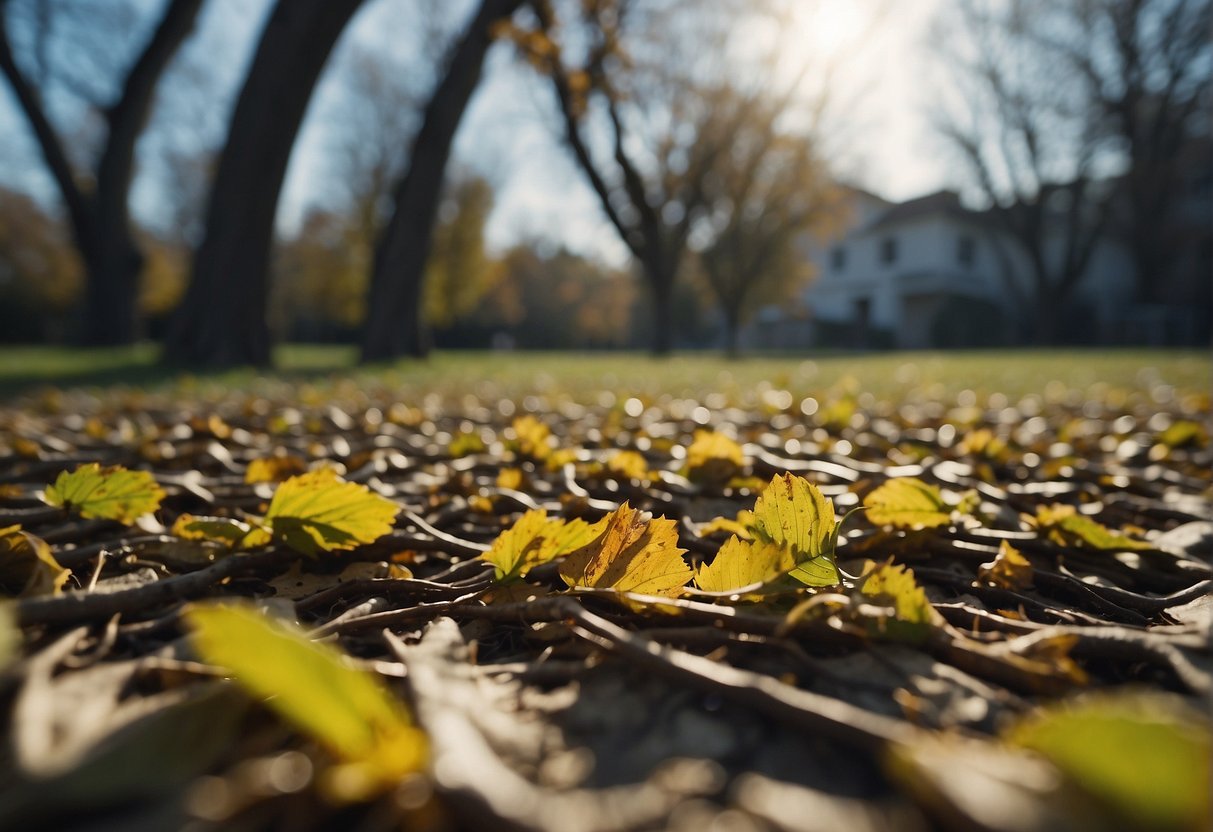Mulberry trees, with their bountiful fruit and pleasant shade, have become a favorite of mine to grow. Deciduous by nature, these trees drop their leaves annually. The specific timing of this leaf drop mainly depends on the climate and growing conditions, but typically occurs during the fall or winter months. This yearly shedding is a normal part of the mulberry tree’s life cycle and allows it to conserve energy during the colder, less hospitable seasons.

I’ve noted that mulberries are hardy and adaptable, thriving in a range of climates from temperate to subtropical. In optimal environments, they bear fruit that varies in color, from white to deep purple, each variant offering a distinct sweet and tangy flavor. One critical aspect for healthy growth is to accurately meet their watering needs. Both over and under-watering can lead to stress, manifesting in premature leaf loss or curled leaves, which can be avoided with careful management.
Mulberry trees naturally lose their leaves as part of their seasonal cycle, often during autumn or winter.
JUMP TO TOPIC
Cultivation and Planting
I ensure that mulberry trees, being deciduous, are planted in the most suitable conditions to thrive. Spring is the optimum planting time to allow the tree to establish before winter.
🤎 Soil Requirements
For my mulberry trees, I aim for rich, well-draining, moist soil. Compost enriches the soil, and sand improves drainage — important factors to prevent standing water and root rot.
- Location: Choose a spot in the garden that receives full to partial sunlight.
- Soil Preparation: I mix in compost and sand if necessary to ensure good drainage.
- Hole Size: The hole should be twice the width and the same depth as the root ball.
- Watering: After planting, I water deeply to settle the soil around the roots.
Be mindful of the invasive nature of white mulberries; I check regional guidelines before planting.
Multiple paragraphs were provided for ease of reading, in accordance with the given instructions.
Proper care and maintenance are crucial to prevent mulberry trees from losing their leaves and ensure their healthy growth.
Care and Maintenance
To sustain a healthy mulberry tree that retains its leaves, I balance a mix of nutrients, regular pruning, adequate watering, and disease management.
Feeding and Nutrients
I fertilize my mulberry tree once in late winter using a balanced 10-10-10 fertilizer—applying 1 pound per inch of trunk diameter.
Pruning and Shaping
Pruning is essential to both shape the tree and promote healthy growth. I prune during dormancy, which is in late winter before spring growth begins.
Watering and Mulching
My mulberry trees need deep watering to prevent stress from drought. I ensure the top 2-3 inches of soil are moist and add organic mulch to retain water and reduce evapotranspiration.
Mulberry trees thrive when watered deeply, especially during dry spells, but dislike waterlogged soil.
Disease and Pest Management
I’m always on the lookout for fungal diseases like root rot and fungal leaf spot. When I spot any signs, I act quickly with appropriate fungicides and cultural practices to prevent spread.
Environmental Considerations
To ensure mulberry trees retain their leaves, I recognize that consistently suitable environmental conditions are essential.
In my experience, mulberries perform optimally in sunlight-rich environments. Their thriving conditions include access to full or partial sunlight, which for mulberries translates to around 6 to 8 hours of direct exposure daily.
| Climate | Temperature | Sunlight |
|---|---|---|
| Various, prefers temperate | Moderate to warm | 6-8 hours daily |
Temperature is yet another critical factor influencing the retention of leaves in mulberry trees. Mulberries fare well in moderate to warm climates. Sudden temperature drops can cause shock, leading to leaf curling and eventual shedding, something I’m cautious to avoid.
🌳 Climate Adaptability: While mulberry trees are versatile and can adapt to diverse climates, maintaining consistency in their growing conditions is vital to prevent premature leaf drop.
I’ve observed that the combination of correct soil moisture and temperature plays a pivotal role in keeping mulberry trees healthy. They do not tolerate waterlogged soil; therefore, well-drained, moist soil contributes significantly to their leaf retention. Every few days, I check the soil; it should be moist but not soggy to touch.
Harvesting and Usage
I find that mulberry trees offer more than just shade. In the right season, usually late spring to summer, mulberry trees bear fruits that are not only edible but delectable and can be used in various culinary preparations such as jams, pies, and jellies. The harvesting window is often short, and the ripe fruits drop quickly, so it’s essential to pick them promptly.
When I harvest mulberries, I look for fruits that are plump and have a deep color, which indicates ripeness. The best time to collect the berries is when they are so ripe that they fall off at the slightest touch. It’s wise to spread a sheet under the tree to catch falling fruits, making the harvesting process cleaner and more efficient.
- Harvest when fruits are deeply colored and soft to the touch.
- Collect fallen fruits from clean sheets to avoid spoilage.
- Use harvested berries promptly or process them for long-term use.
Beyond their fruits, mulberry leaves also serve a purpose; they can be used to make tea and are a favorite among silk worms. However, I pick these leaves in spring and summer when they’re most tender. As winter approaches, mulberry trees shed their leaves, which is a natural part of their lifecycle, signaling the end of the harvesting season.












